- 20 Aug 2012 14:46
#14036455
In 1947 Jaffa was the largest Arab city in Palestine, an important port, the leading Arab commercial and industrial hub in the country, and a major political, social, and cultural center.
The port was the departure point for most of the Europe-bound fruit of the Arab citrus growers. It was in Jaffa that the leading Arab newspapers were published.
In symbolic and national terms, Jaffa was for Palestinian-Arab society second in importance only to Jerusalem, as reflected in its public tilitles , “bride of the sea” and “bride of Palestine"
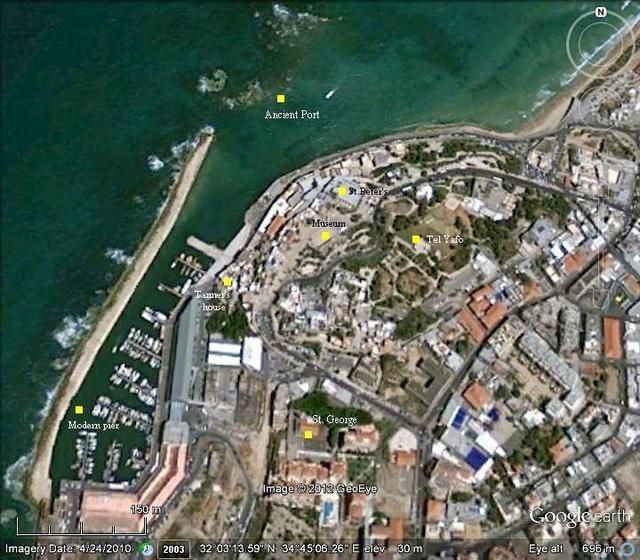
Under the terms of the United Nations General Assembly partition resolution adopted on 29 November 1947, Jaffa was to become within the Arab state .
The city fate was decided 15 years prior to the UN partition resolution when Jewish communities started to exist all around the city perimeter to form a continuous ring that would have a decisive military value when hostilities start.
These Jewish communities were Tel Aviv to the north, Holon and Bat Yam to the south, and Hatikva neighborhood together to the north-east. The city was connected to the Arab rural hinterland througha narrow strip between them, along which the Jaffa-Jerusalem road pass through the village of Yazur.
These Jewish communities started to exist in a very close date to the fight for the city.
Tel Aviv was founded to the north of Jaffa in 1909 by European Jews immigrants to establish a Jewish urban centre in Palestine . Holon was founded in 1935 to the south of Jaffa while Bat yam & Hatikva were founded in 1935& 1936
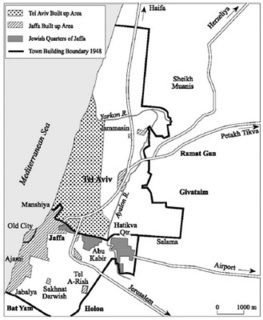
Jaffa was considered the richest Arab city in the country, with its concentration of wealthy businessmen who had made their fortune in the citrus industry and in port-based commerce. There were affluent central neighborhoods, such as ‘Ajami and northern Jabaliyya, as well as the modern Nuzha quarter, inhabited by magnates and an educated upper middle class that sprang up and flourished in the Mandate period.
Hostilities erupted between Jews and Arabs on 30 November 1947, the day after the partition resolution was adopted.
Jews and Arabs living in the border zones started to evacuate their homes.
In Jaffa city There was a rush to withdraw money from the Arab Bank and Bank al-Umma, both of which were under Palestinian-Arab ownership.
The hostilities brought a halt to Arab-Jewish economic cooperation in the Carmel market and in the workshops and industries in south Tel Aviv, Holon, and Bat Yam. The construction industry was paralyzed.
As soon as the fighting started, Arab snipers took up positions on rooftops and the upper storeys of buildings that overlooked Tel Aviv in Abu Kabir and Manshiyya and opposite Holon and Bat Yam, harassing the Jewish inhabitants with gunfire.
In response, the Haganah built protective walls and blew up several buildings from which Arab snipers were operating.
The Haganah even used snipers of its own to locate and incapacitate their Arab counterparts, but also to shoot at Arab civilians in the border areas.
On 7 December, Abu Kabir was attacked by IZL (Jewish under ground organization-Irgun Tzva’i Le’umi) fighters and some of the dwellings in the shantytown were set ablaze.
On 13 December, IZL dropped a barrel packed with explosives from a vehicle against Venezia Café killing 6 persons & injuring many.
On the same day, the IZL blew up houses in the villages of Yahudiyya-‘Abbasiyya and Yazur, killing seven Arabs.
On 30 December, the IZL launched another attack on Jaffa’s rear. This time the squads landed from the sea and tried to attack Arab cafe´s in the port area, but local fighters stationed nearby drove them off, apparently without losses on the Arab side.
The next day, IZL men, dressed as Arabs, again entered Jaffa and threw a bomb into an Arab cafe´.
A similar mode of offense was adopted by Lehi (Lohamei Herut Yisrael, also known as the Stern Gang), a radical offshoot of IZL.
On 11 December, Lehi men threw a bomb into a cafe´ in Yazur and in January 1948 the organization blew up several houses in Manshiyya that were being used by snipers. Lehi executed the cutting of the rail line to Jaffa, stopping train services to the city for a time.
On 4 January, two Lehi men entered Jaffa in a trapped vehicle disguised as a truck carrying oranges. They parked the truck, which contained about half a ton of explosives, next to the Saraya, the building that housed the Jaffa National Committee (al-Lajna al-Qawmiyya), located in Clock Square, in the heart of Arab Jaffa.
An explosion gutted the building killing 28 Arabs. Nearby buildings were also damaged and some collapsed, among them Barclays Bank, Ottoman Bank and the Arab Bank.
Here is a photo of the Serai building after explosion:-
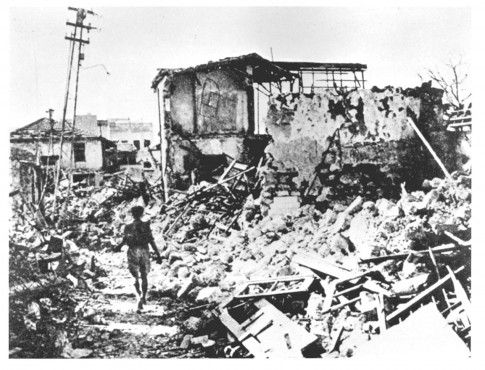
On the middle of January 1948, a new commander for Jaffa defence was appointed by ALA . Hasan Salame, became in charge of the city dfence . Salame organized the city boundries defense line into 13 sectors and a guard unit was stationed in each.
The city defenders were concentrated primarily in Abu Kabir in the north and on the Jabaliyya front – Saknat Darwish – and Tel al-Rish in the south.
On 22 January, about 40 Yugoslav Muslims (Bosnians) arrived in Jaffa. Their arrival boosted morale and led to an increase in the Palestinian military activity.
On the beginning of February & for some unknown reasons Salame was shifted to a higher command but the direct Jaffa military command was taken from & settled to an Iraqi officer (Adel Najm El Din).
Henceforth, almost until its fall in April, Jaffa would be under the command of foreign officers, among them Iraqis, Syrians, Yugoslavs, and even a small group of Germans, who were considered experts in sabotage and building fortifications. Outsiders increasingly took the place of Palestinian Arabs among the rank-and-file troops as well.
At the beginning of March, the Arabs put a mortar into action for the first time in the Manshiyya sector, and organized attacks were carried out against Jewish positions along the border.
In response, the Haganah attacked Abu Kabir on 13 March and al-Bassa on the twenty-fourth. The attacks claimed few lives, but houses were destroyed and a large number of mortar shells were fired.
The arrival of the ALA commander (Arab Liberation Army) & foreigner troops was a turning point in the relations between the local population and the combat forces. Jaffa residents were particularly appalled at the behavior of a group of Hamawi fighters
(from the city of al-Hama, in Syria). They arrived in the city at the beginning of March, went on a rampage of robbery and looting, and then quickly left.
According to various estimates, between 35,000 and 45,000 Palestinian Arabs remained in Jaffa on the eve of its fall, compared to approximately 70,000: 90,000 at the start of the war in December 1947. The difference was mainly due to the mass departure from the city by the wealthy & middle class families together with business / commerce labor force.
The final collapse of the city was triggered on 25 April, when the IZL attacked the northern suburb of Manshiyya
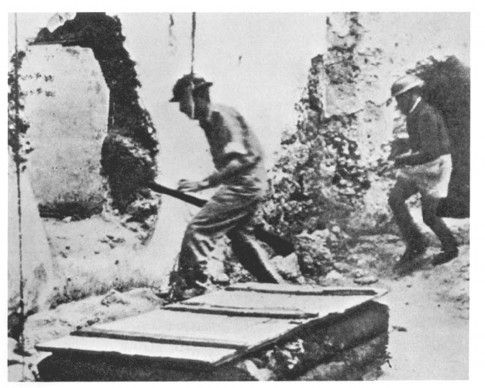
The defenders put up fierce resistance but the area was taken after a three-day battle. A mortar barrage on the center of the city during the assault resulted in tremendous panic and generated a mass flight via the Sea
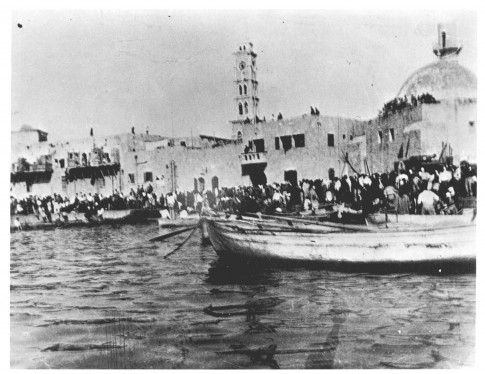
Parallel to Jaffa city attack, Haganah executed operation Hametz (29-30) April which targeted the Palestinian rural area east of Jaffa thus cutting the city completely by land except the British controlled roads.
At this point, a ceasefire was imposed by the British, who intervened to stop the assault on the Manshiyya front. However, the mortar attack, the fall of Manshiyya, and the conquest of the surrounding villages left the civilian population totally demoralized. The exodus by sea and in trucks via the British-controlled road to Ramla continued even after the ceasefire.
This was accompanied by the breakdown of local institutions and services, some of which were also of national importance, such as the newspapers, all of which ceased publication on the same day toward the end of ApriL
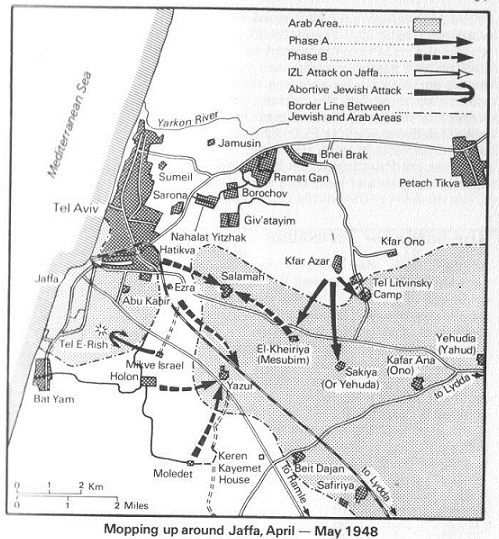
Reinforcements in the form of about 250 troops from the ALA’s Ajnadayn battalion, under the command of Michel al-‘Isa, arrived on the morning of 28 April. But it was too late. If the battalion had arrived earlier, events might have taken a different course and Manshiyya might not have fallen. Still, the battalion assisted the garrison in recapturing Tal al-Rish, a rural suburb and forward position which had fallen to the Haganah a few hours earlier.
As a result, the Haganah was unable to pursue its plan to take Tal al-Rish and Saknat Darwish on Jaffa’s southern outskirts, consolidate its positions there, and attack Arab headquarters in Jabaliyya.
The reinforcements were greeted jubilantly in Jaffa, even if combatants and residents alike feared that this would not be enough to save the city.
Differences among ALA forces erupted as the older existing garrison officers refused the leadership of the fresh arrived reinforcements commander. Subsequently, the existing commander decided to leave the city with his troops by the Sea in a manner that affected the city defense. The following Telegram that was sent by the new commander describes the accident :-
[Commander Adil [Najm al-Din] left city by sea with all Iraqis and Yugoslavs after the British army prevented their departure by land with their weapons]. After more departures today, city almost deserted by inhabitants. The ability of the city to provide for what is left of the garrison will end tomorrow. The British commander has ordered a ceasefire until the middle of the current month [and the end of the Mandate]. If the Jews do not obey the order I have no forces adequate to hold them back. The [desertion] infection has spread to Ajnadayn [battalion]. I await your urgent instructions]
On the 5th of May all officials deserted the city including the mayor & the latest ALA military commander. The remaining Jaffa citizens formed an emergency committee which declared it as an open city & surrendered to Haganah on the 13th of May
On the 14th of May, Haganah units accompanied with IZL forces occupied the city. The remaining Jaffa inhabitants were led to concentration areas behind barbed wire fences. Jaffa Palestinians properties were vandalized, looted & robbed. Troops used the inhabitants for forced unpaid labor.
The city inhabitants were subjected to various attacks & molesting. On the 14th or 15th May, a 12 year old girls was raped by two haganah soldiers & other rape trials were reported .
On the 25th of May, 15No Palestinians were found shot in JJibalya neighborhood while some of them were wearing official ID cards.
There was wide spread institutional & private looting by Haganah , IZL troops & Tel-Aviv citizens who infiltrated the city.
There was robbering on the roads by patrolling Jewish troops ( with watches, rings, cash ,---etc taken).
On the 25th of May , an Israeli official reported [during the whole I walked about the streets where I saw soldiers, civilians , military police looting , robbing while breaking through walls & doors. ]
The situation gradually improved but Jaffa Palestinians remained objects of harassment for a considerable period to come.
The following photos show Palestinians desertion & Jew immigrants settling in the Legendary City
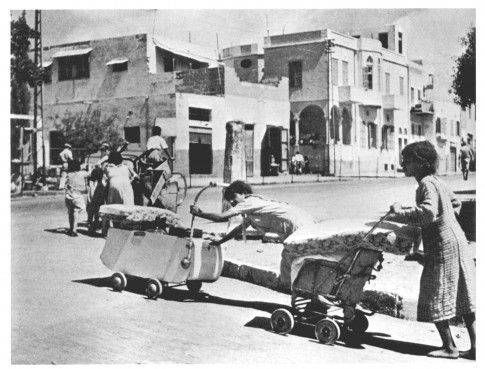
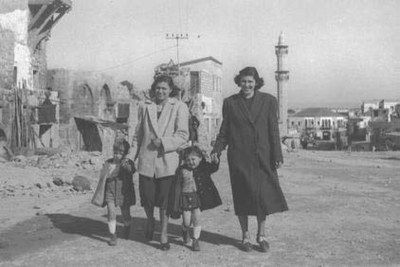
The thread information was collected from the following respectful references :-
1-Jaffa , 1948 :- The fall of the city by Itamar Radai PHD scholar of the Hebrew University.
2- The birth of the Palestinians refugees problem by Benny Morris.
3- Nekba by Aref Al Aref.
The port was the departure point for most of the Europe-bound fruit of the Arab citrus growers. It was in Jaffa that the leading Arab newspapers were published.
In symbolic and national terms, Jaffa was for Palestinian-Arab society second in importance only to Jerusalem, as reflected in its public tilitles , “bride of the sea” and “bride of Palestine"

Under the terms of the United Nations General Assembly partition resolution adopted on 29 November 1947, Jaffa was to become within the Arab state .
The city fate was decided 15 years prior to the UN partition resolution when Jewish communities started to exist all around the city perimeter to form a continuous ring that would have a decisive military value when hostilities start.
These Jewish communities were Tel Aviv to the north, Holon and Bat Yam to the south, and Hatikva neighborhood together to the north-east. The city was connected to the Arab rural hinterland througha narrow strip between them, along which the Jaffa-Jerusalem road pass through the village of Yazur.
These Jewish communities started to exist in a very close date to the fight for the city.
Tel Aviv was founded to the north of Jaffa in 1909 by European Jews immigrants to establish a Jewish urban centre in Palestine . Holon was founded in 1935 to the south of Jaffa while Bat yam & Hatikva were founded in 1935& 1936

Jaffa was considered the richest Arab city in the country, with its concentration of wealthy businessmen who had made their fortune in the citrus industry and in port-based commerce. There were affluent central neighborhoods, such as ‘Ajami and northern Jabaliyya, as well as the modern Nuzha quarter, inhabited by magnates and an educated upper middle class that sprang up and flourished in the Mandate period.
Hostilities erupted between Jews and Arabs on 30 November 1947, the day after the partition resolution was adopted.
Jews and Arabs living in the border zones started to evacuate their homes.
In Jaffa city There was a rush to withdraw money from the Arab Bank and Bank al-Umma, both of which were under Palestinian-Arab ownership.
The hostilities brought a halt to Arab-Jewish economic cooperation in the Carmel market and in the workshops and industries in south Tel Aviv, Holon, and Bat Yam. The construction industry was paralyzed.
As soon as the fighting started, Arab snipers took up positions on rooftops and the upper storeys of buildings that overlooked Tel Aviv in Abu Kabir and Manshiyya and opposite Holon and Bat Yam, harassing the Jewish inhabitants with gunfire.
In response, the Haganah built protective walls and blew up several buildings from which Arab snipers were operating.
The Haganah even used snipers of its own to locate and incapacitate their Arab counterparts, but also to shoot at Arab civilians in the border areas.
On 7 December, Abu Kabir was attacked by IZL (Jewish under ground organization-Irgun Tzva’i Le’umi) fighters and some of the dwellings in the shantytown were set ablaze.
On 13 December, IZL dropped a barrel packed with explosives from a vehicle against Venezia Café killing 6 persons & injuring many.
On the same day, the IZL blew up houses in the villages of Yahudiyya-‘Abbasiyya and Yazur, killing seven Arabs.
On 30 December, the IZL launched another attack on Jaffa’s rear. This time the squads landed from the sea and tried to attack Arab cafe´s in the port area, but local fighters stationed nearby drove them off, apparently without losses on the Arab side.
The next day, IZL men, dressed as Arabs, again entered Jaffa and threw a bomb into an Arab cafe´.
A similar mode of offense was adopted by Lehi (Lohamei Herut Yisrael, also known as the Stern Gang), a radical offshoot of IZL.
On 11 December, Lehi men threw a bomb into a cafe´ in Yazur and in January 1948 the organization blew up several houses in Manshiyya that were being used by snipers. Lehi executed the cutting of the rail line to Jaffa, stopping train services to the city for a time.
On 4 January, two Lehi men entered Jaffa in a trapped vehicle disguised as a truck carrying oranges. They parked the truck, which contained about half a ton of explosives, next to the Saraya, the building that housed the Jaffa National Committee (al-Lajna al-Qawmiyya), located in Clock Square, in the heart of Arab Jaffa.
An explosion gutted the building killing 28 Arabs. Nearby buildings were also damaged and some collapsed, among them Barclays Bank, Ottoman Bank and the Arab Bank.
Here is a photo of the Serai building after explosion:-

On the middle of January 1948, a new commander for Jaffa defence was appointed by ALA . Hasan Salame, became in charge of the city dfence . Salame organized the city boundries defense line into 13 sectors and a guard unit was stationed in each.
The city defenders were concentrated primarily in Abu Kabir in the north and on the Jabaliyya front – Saknat Darwish – and Tel al-Rish in the south.
On 22 January, about 40 Yugoslav Muslims (Bosnians) arrived in Jaffa. Their arrival boosted morale and led to an increase in the Palestinian military activity.
On the beginning of February & for some unknown reasons Salame was shifted to a higher command but the direct Jaffa military command was taken from & settled to an Iraqi officer (Adel Najm El Din).
Henceforth, almost until its fall in April, Jaffa would be under the command of foreign officers, among them Iraqis, Syrians, Yugoslavs, and even a small group of Germans, who were considered experts in sabotage and building fortifications. Outsiders increasingly took the place of Palestinian Arabs among the rank-and-file troops as well.
At the beginning of March, the Arabs put a mortar into action for the first time in the Manshiyya sector, and organized attacks were carried out against Jewish positions along the border.
In response, the Haganah attacked Abu Kabir on 13 March and al-Bassa on the twenty-fourth. The attacks claimed few lives, but houses were destroyed and a large number of mortar shells were fired.
The arrival of the ALA commander (Arab Liberation Army) & foreigner troops was a turning point in the relations between the local population and the combat forces. Jaffa residents were particularly appalled at the behavior of a group of Hamawi fighters
(from the city of al-Hama, in Syria). They arrived in the city at the beginning of March, went on a rampage of robbery and looting, and then quickly left.
According to various estimates, between 35,000 and 45,000 Palestinian Arabs remained in Jaffa on the eve of its fall, compared to approximately 70,000: 90,000 at the start of the war in December 1947. The difference was mainly due to the mass departure from the city by the wealthy & middle class families together with business / commerce labor force.
The final collapse of the city was triggered on 25 April, when the IZL attacked the northern suburb of Manshiyya

The defenders put up fierce resistance but the area was taken after a three-day battle. A mortar barrage on the center of the city during the assault resulted in tremendous panic and generated a mass flight via the Sea

Parallel to Jaffa city attack, Haganah executed operation Hametz (29-30) April which targeted the Palestinian rural area east of Jaffa thus cutting the city completely by land except the British controlled roads.
At this point, a ceasefire was imposed by the British, who intervened to stop the assault on the Manshiyya front. However, the mortar attack, the fall of Manshiyya, and the conquest of the surrounding villages left the civilian population totally demoralized. The exodus by sea and in trucks via the British-controlled road to Ramla continued even after the ceasefire.
This was accompanied by the breakdown of local institutions and services, some of which were also of national importance, such as the newspapers, all of which ceased publication on the same day toward the end of ApriL

Reinforcements in the form of about 250 troops from the ALA’s Ajnadayn battalion, under the command of Michel al-‘Isa, arrived on the morning of 28 April. But it was too late. If the battalion had arrived earlier, events might have taken a different course and Manshiyya might not have fallen. Still, the battalion assisted the garrison in recapturing Tal al-Rish, a rural suburb and forward position which had fallen to the Haganah a few hours earlier.
As a result, the Haganah was unable to pursue its plan to take Tal al-Rish and Saknat Darwish on Jaffa’s southern outskirts, consolidate its positions there, and attack Arab headquarters in Jabaliyya.
The reinforcements were greeted jubilantly in Jaffa, even if combatants and residents alike feared that this would not be enough to save the city.
Differences among ALA forces erupted as the older existing garrison officers refused the leadership of the fresh arrived reinforcements commander. Subsequently, the existing commander decided to leave the city with his troops by the Sea in a manner that affected the city defense. The following Telegram that was sent by the new commander describes the accident :-
[Commander Adil [Najm al-Din] left city by sea with all Iraqis and Yugoslavs after the British army prevented their departure by land with their weapons]. After more departures today, city almost deserted by inhabitants. The ability of the city to provide for what is left of the garrison will end tomorrow. The British commander has ordered a ceasefire until the middle of the current month [and the end of the Mandate]. If the Jews do not obey the order I have no forces adequate to hold them back. The [desertion] infection has spread to Ajnadayn [battalion]. I await your urgent instructions]
On the 5th of May all officials deserted the city including the mayor & the latest ALA military commander. The remaining Jaffa citizens formed an emergency committee which declared it as an open city & surrendered to Haganah on the 13th of May
On the 14th of May, Haganah units accompanied with IZL forces occupied the city. The remaining Jaffa inhabitants were led to concentration areas behind barbed wire fences. Jaffa Palestinians properties were vandalized, looted & robbed. Troops used the inhabitants for forced unpaid labor.
The city inhabitants were subjected to various attacks & molesting. On the 14th or 15th May, a 12 year old girls was raped by two haganah soldiers & other rape trials were reported .
On the 25th of May, 15No Palestinians were found shot in JJibalya neighborhood while some of them were wearing official ID cards.
There was wide spread institutional & private looting by Haganah , IZL troops & Tel-Aviv citizens who infiltrated the city.
There was robbering on the roads by patrolling Jewish troops ( with watches, rings, cash ,---etc taken).
On the 25th of May , an Israeli official reported [during the whole I walked about the streets where I saw soldiers, civilians , military police looting , robbing while breaking through walls & doors. ]
The situation gradually improved but Jaffa Palestinians remained objects of harassment for a considerable period to come.
The following photos show Palestinians desertion & Jew immigrants settling in the Legendary City


The thread information was collected from the following respectful references :-
1-Jaffa , 1948 :- The fall of the city by Itamar Radai PHD scholar of the Hebrew University.
2- The birth of the Palestinians refugees problem by Benny Morris.
3- Nekba by Aref Al Aref.



 - By Potemkin
- By Potemkin - By Deutschmania
- By Deutschmania